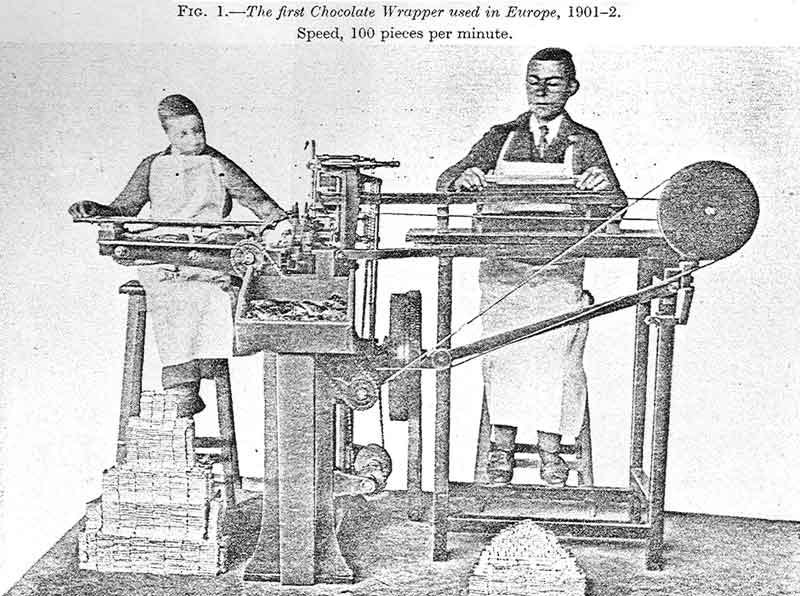Gelt is the newest object to become a permanent part of Hanukkah. Its history, in broad terms, is well known: there was a centuries-old tradition of giving actual money to people at the end of the year, and this custom was adopted by Jews, transferred from adults to kids, and then from real money to chocolate. Today, chocolate coins / gelt are a part of Hanukkah/Christmas celebrations in many parts of the world.
But who exactly came up with the idea of wrapping slivers of chocolate in foil? Though the answer is sometimes presented as inscrutable, the truth is that there’s a very clear answer: chocolate coins were invented by Andrew Forbes and Frederick Grover between 1897 and 1903. What’s more, the sequence by which they came to invent chocolate coins is quite clear.
At the end of the 19th century, industrial food manufacturers had a new tool at their disposal: tin foil (later to be replaced by aluminum foil, though the name stuck). Metal packaging for food had previously been used in tin cans, which gained popularity in military contexts at the beginning of the century. Thin metal sheets improved on the tin can because they could be wrapped around small objects, protecting them while remaining quite flexible—and allowing customers to buy and distribute arbitrarily small quantities with ease. Many of the foods that are still wrapped in foil today—like cream cheese—were first sold during this period.
Initially, foil wrapping took place by hand, but the repetitive wrapping motions were prime candidates for automation. In 1897, Andrew Forbes and Frederick Grover invented the first automatic wrapping machine, initially to help the Lever Brothers (one of the companies merged to create Unilever) wrap small bits of soap. Forbes and Grover were engineers working at Yorkshire College, which would eventually become the University of Leeds.
Unfortunately, the Lever Brothers didn’t want the machine; labor costs were so low that there was no economic reason to automate the process. Seeking other objects to wrap, Forbes and Grover turned to a local confectioner that specialized in butterscotch. This arrangement didn’t last long because butterscotch proved to be too hard and the foils would tear too easily. Finally, Forbes and Grover landed on the wrapping of chocolates—first chunks, then small disks—and soon began selling their wrapping machines to chocolate manufacturers in both England and Switzerland.
The rest, as they say, is history—Forbes and Grover formed a company called (creatively) Forgrove that sold machines for wrapping chocolate, among other things. This entire history was recounted in a 1968 book on Baker Perkins, a different English company that acquired more than a dozen food packaging companies, including Forgrove.

A simple answer to a simple question. While it doesn’t answer who first switched out real coins for the new chocolate variety, it does explain how the chocolate coins got there in the first place.
Happy Hanukkah!





